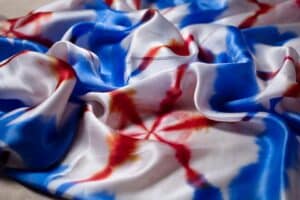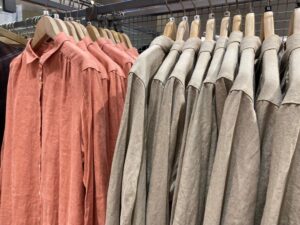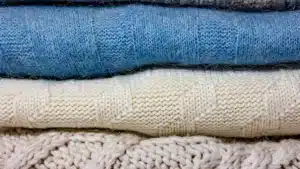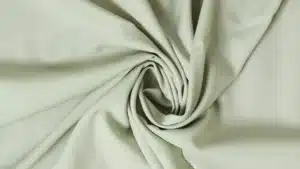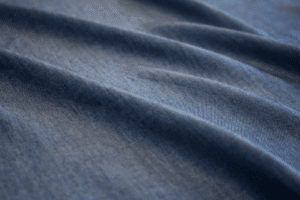When picking outdoor clothes, fabric choice is very important. TPU (Thermoplastic Polyurethane) and PU (Polyurethane) coated fabrics work differently in strength, water resistance, and comfort. These differences are key because outdoor clothes face tough weather and need to feel good. TPU coated fabrics are very strong and stretchy, perfect for rough conditions. The TPU fabric market is growing fast, from $2 billion in 2022 to $2.8 billion by 2030. This shows people want stronger and safer materials. Picking the right fabric helps your clothes work well for any adventure.
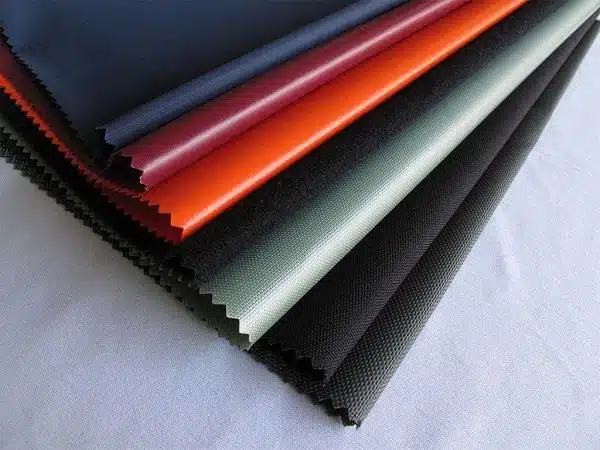
Key Takeaways
-
TPU fabrics are strong, bendable, and great for tough weather. They block water, oil, and heat, making them great for hiking and water fun.
-
PU fabrics cost less and handle light rain well. They are good for casual outdoor use and help fight germs to stay clean.
-
For gear that lasts longer, pick TPU fabrics. They are tougher and keep water out better, especially in bad weather.
-
Taking care of outdoor clothes is important. Clean TPU softly and keep PU in a cool, dry spot to make them last longer.
-
Think about your outdoor plans when picking fabric. TPU works best for big adventures, while PU is good for short trips and saving money.
Material Overview
What Are TPU Coated Fabrics?

TPU coated fabrics are very strong and last a long time. They mix thermoplastic polyurethane (TPU) with another material. This creates a tough but bendable layer. These fabrics are used in areas like planes, defense, and cars. They can handle tough weather, heat, and pressure. They also resist oil, water, and scratches, making them great for outdoor clothes in hard conditions.
A key feature of TPU fabrics is their stretchiness. They can stretch without ripping, which is great for movement. For example, TPU with mesh is light and airy, perfect for sports clothes. TPU mixed with PVC is stronger and blocks water better. This is why it’s used in factories and cars. These fabrics can also be made to fit special needs, making them useful for many outdoor items.
What Are PU Coated Fabrics?

PU coated fabrics are made by adding a polyurethane (PU) layer to a base. These fabrics are common in outdoor gear because they work well in bad weather. They also have germ-fighting technology to keep them clean longer. This makes them a good choice for clothes that get dirty or wet often.
PU fabrics are great at keeping water out. They can handle high water pressure without leaking, keeping you dry. But they might tear more easily than TPU fabrics. Even so, they stop germs from growing and protect against weather. This makes them a favorite for people who love the outdoors.
Key Differences Between TPU and PU Coatings
Here’s a quick comparison of TPU and PU coatings:
| Property | TPU Coating | PU Coating |
|---|---|---|
| Durability | Very strong and long-lasting | Less durable |
| Flexibility | Very stretchy and flexible | Less stretchy, can become stiff |
| Eco-Friendliness | Non-biodegradable, hard to dispose | Creates waste, but recycling efforts exist |
| Cost | Higher cost | Lower cost |
| Water Resistance | Excellent waterproofing over time | Initial waterproofing, may leak later |
| Breathability | Highly breathable, great moisture control | Less breathable, meets lower standards |
| Applications | High-performance gear | Mid-range and casual gear |
| Weight | Lighter and more comfortable. | Heavier, especially with thick layers. |
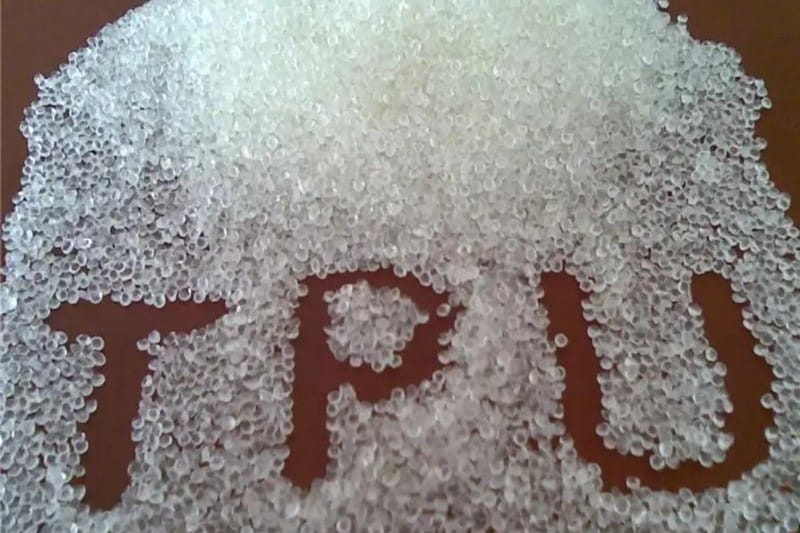
Durability and Longevity
TPU coated fabrics are very strong and last longer. They resist damage from heat and moisture, making them great for outdoor use. TPU is also harder to tear and can handle tough conditions. It stays strong even when exposed to oils or extreme temperatures.
PU coated fabrics are less durable over time. Heat and moisture can break down the PU layer, causing bad smells and less waterproofing. While PU is still strong, it doesn’t last as long as TPU in rough conditions. For long-lasting outdoor clothing, TPU is the better choice.
| Property | TPU (Polyester) | PU (Polyurethane) |
|---|---|---|
| Hydrolytic Stability | Great with polyether TPU | Weak, breaks down with moisture |
| Mechanical Properties | Stronger and harder to tear | Weaker compared to TPU |
Water Resistance and Weatherproofing

Both TPU and PU fabrics keep water out, but TPU works better over time. TPU doesn’t soak up water and stays waterproof longer. It also resists salt water, oil, and grease, making it good for tough environments.
PU fabrics start waterproof but can absorb water after a while. This can cause leaks if used in wet conditions for too long. Thicker PU layers can also make the fabric heavier and easier to tear. For lightweight and reliable waterproof clothing, TPU is the better option.
Breathability and Comfort
Breathability is important for outdoor clothes, especially during activities. TPU fabrics, especially with mesh, let sweat escape well. They keep you dry and comfortable with moisture control between ~3000 to 7500 g/m²/day. TPU is also stretchy and light, making it great for sportswear.
PU fabrics are breathable but not as good as TPU. The minimum industry standard for breathability is 500 g/m²/day, and PU often meets just the lower end. If you want comfort and breathability, TPU fabrics are the best choice.
Flexibility and Weight
Flexibility and weight are key for outdoor clothing. TPU coated fabrics are very stretchy and flexible. They bend and stretch without breaking or losing shape. This makes them great for active outdoor sports. TPU stays flexible even in tough conditions like strong sunlight or chemicals.
PU coated fabrics are not as stretchy as TPU. They work fine for normal use but struggle with frequent bending. PU can become stiff, especially in cold weather. This makes it less ideal for some outdoor activities.
TPU fabrics are also lighter than PU fabrics. Their lightness makes them more comfortable to wear for a long time. PU fabrics can feel heavier, especially with thick layers for waterproofing. For lightweight and flexible clothing, TPU is the better choice.
Environmental Impact and Sustainability
The environment is affected by TPU and PU fabrics. TPU is strong and useful but does not break down naturally. This adds to land pollution and makes disposal hard. Burning TPU releases harmful gases, which pollute the air. Using TPU responsibly is very important.
| Environmental Concern | Description |
|---|---|
| Non-biodegradability | TPU does not break down and harms the land. |
| Disposal Issues | Hard to get rid of, filling up landfills. |
| Emissions from Burning | Burning TPU pollutes the air with bad gases. |
PU fabrics also harm the environment. Making and throwing away PU creates waste and pollution. The industry is working on better recycling and waste solutions. Experts suggest teaching people to recycle and reuse these materials.
Neither TPU nor PU is fully eco-friendly. TPU lasts longer, so it needs replacing less often. This can help reduce waste. Picking the right fabric means thinking about both performance and the planet.
Choosing the Right Fabric for Outdoor Clothing
When to Use TPU Coated Fabrics
Pick TPU coated fabrics if you need strong and flexible clothing. These fabrics are great for outdoor use because they resist water, oil, and heat. They work well for hiking, camping, or water sports. TPU fabrics stay waterproof even under heavy rain or pressure. This makes them perfect for rain jackets, waterproof pants, and wet-weather gear.
Another benefit of TPU fabrics is their ability to be customized. They can be made breathable for sportswear or stretchy for activewear. This means you can find clothing that fits your needs and style. New production methods have made TPU fabrics even better. They are a dependable choice for outdoor lovers.
Tip: Choose TPU fabrics for lightweight, flexible, and durable outdoor clothing.
When to Use PU Coated Fabrics
PU coated fabrics are a good option if you want affordable, weather-resistant clothes. They work well in mild conditions like light rain or cool weather. These fabrics are often used in jackets, backpacks, and tents. While not as tough as TPU, they are fine for casual outdoor activities.
PU fabrics are also great for keeping clothes clean. They have germ-fighting features that help them stay fresh longer. PU fabrics are easy to find and come in many designs. This gives you lots of choices for your outdoor gear.
Note: For occasional outdoor use or budget-friendly options, PU fabrics are a smart pick.
| Factor Type | Description |
|---|---|
| Strengths | Many fabric options, High-quality materials, Great customer support |
| Weaknesses | Expensive, Hard to find in some areas, Limited fabric knowledge |
| Opportunities | New markets, Better fabric technology, Focus on eco-friendly solutions |
| Threats | Competing brands, Changing customer tastes, Economic challenges |
Applications of TPU and PU Coated Fabrics

TPU Coated Fabrics
- High-Performance Outerwear: Jackets, pants, and gloves for extreme conditions.
- Footwear: Durable and waterproof hiking boots and shoes.
- Technical Gear: Tents, backpacks, and climbing equipment.

PU Coated Fabrics
- Casual Outerwear: Lightweight jackets and raincoats.
- Accessories: Backpacks, hats, and gaiters.
- Mid-Range Gear: Affordable outdoor clothing for everyday use.
Caring for TPU and PU Coated Fabrics
Taking care of your outdoor clothes helps them last longer. Both TPU and PU coated fabrics need special care to stay strong, waterproof, and in good shape.
To extend the lifespan of your coated fabrics, follow these care tips:
- Wash Gently: Use a mild detergent and cold water.
- Avoid Fabric Softeners: They can degrade the coating over time.
- Air Dry: Avoid high heat, which can damage the coating.
- Reapply DWR Coating: Restore water repellency with a durable water repellent (DWR) spray.
Tips for Caring for TPU Coated Fabrics
Clean TPU fabrics gently with a soft cloth and mild soap. Don’t use strong chemicals or scrub hard, as this can harm the coating. Let the fabric air-dry fully before putting it away. While TPU fabrics resist water and oil, too much exposure to harsh conditions can weaken them. Keep them in a cool, dry spot to protect their strength and flexibility.
Tip: Check your TPU gear often for small tears or scratches. Fixing them early stops bigger problems later.
Tips for Caring for PU Coated Fabrics
PU fabrics need extra care to avoid breaking down over time. Store them in a cool, dry, and dark place to slow damage. Make sure PU-coated jackets or tents are completely dry before storing to prevent mold. Too much water exposure can cause leaks, so try to limit contact with wet conditions.
Note: Thick PU layers block water better but add weight and tear more easily. Handle them gently to avoid damage.
Comparison of Storage Needs
| Fabric Type | Storage Environment | Key Considerations |
|---|---|---|
| TPU Coated Fabrics | Cool, dry, and ventilated | Avoid strong chemicals and high heat |
| PU Coated Fabrics | Cool, dry, and dark | Fully dry items to stop mold |
By caring for your fabrics properly, you can make them last longer. Whether you pick TPU fabrics for flexibility or PU fabrics for affordability, good maintenance is key.
Picking between TPU and PU fabrics depends on your needs. TPU fabrics are strong, flexible, and handle tough conditions well. They are great for hard adventures but cost more. PU fabrics are good at keeping water out and fighting germs. They work best for light outdoor use or places needing cleanliness.
Think about how often you’ll wear the clothes and the weather. For long-lasting and tough gear, TPU fabrics are the best pick. If you want cheaper clothes with decent protection, PU fabrics work fine. Always check strength, water resistance, and eco-friendliness to choose the right fabric for your adventures.
FAQ
Why are TPU fabrics good for tough outdoor conditions?
TPU fabrics are strong, stretchy, and resist water, oil, and heat. They stay durable in harsh weather, making them great for hiking, camping, or water sports.
Tip: Pick TPU for gear that lasts in bad weather.
Can PU fabrics handle heavy rain?
PU fabrics work well in light or medium rain. But they can soak water over time, causing leaks. TPU fabrics are better for staying dry in heavy rain.
Note: Use PU for casual outdoor trips in mild rain.
Is TPU or PU better for the environment?
Neither is fully eco-friendly. TPU lasts longer, so it creates less waste. But it doesn’t break down naturally. PU needs replacing more often, which adds to waste.
Can damaged TPU and PU fabrics be fixed?
Yes, both can be repaired. TPU is easier to patch because it’s flexible and strong. PU repairs may need special glue or coatings to work well.
Tip: Check your gear often for small damage and fix it early.
Which fabric is best for lightweight outdoor clothes?
TPU fabrics are lighter and stretchier, making them great for light clothing. PU fabrics can feel heavier, especially with thick waterproof layers. TPU is better for comfort and movement.

















